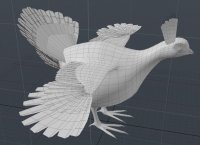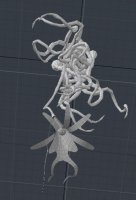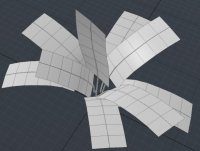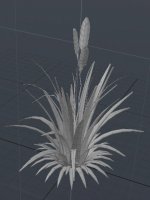Creating a new model is almost always a challenge. Hopefully, someone will be interested in my modeling thought process... typing it out here, if anything helps me to think it through. If anything, it should add some appreciation into what we content creators have to work through on every model.
Working on my Prairie Chicken and Sage-grouse project, at the start they seemed to be similar in many ways, but as I progressed there are more than a few stark differences.... not just between the Grouse and Chicken but between male and female. Both female models are relatively alike from a geometry stand-point, but the males however are a difference story.
First, what's alike... they both have tall crown feathers (although they look complete different). The male Prairie Chicken has a crown crest that behaves similar to a Cockatoo crest (full formed feathers); it does have the unique ability to also go sideways, as well as up and down. The Sage-grouse crown is composed of wiry hair-like feathers that aren't that noticeable. I think the set of planes I've created (on the example shown below) will work of both, although the transparency maps will be vastly different. The crest will have a "hide" morph for the females.
Where the big difference occurs is in the throat air-sac (when inflated) and distinct male Sage-grouse collar. With the Sage-grouse when the air sac is inflated the two bare patches of skin reveal themselves frontally whereas with the Prairie Chicken they appear on the sides. I could slide the geometry around but that will cause some texture stretching. For Sage-grouse collar, I think I can use a "hide" morph for when the male Prairie Chicken and females, but the placement of the two bare patches of skin on each species makes me lean towards two separate models.
There's also the trick of hiding those two patches of skin was the air sac isn't inflated. I'll probably be using the same solution I did that hid the Kiwi wings-- it seemed to work pretty well.
View attachment 16591


 Both are you are very talented people...
Both are you are very talented people...




